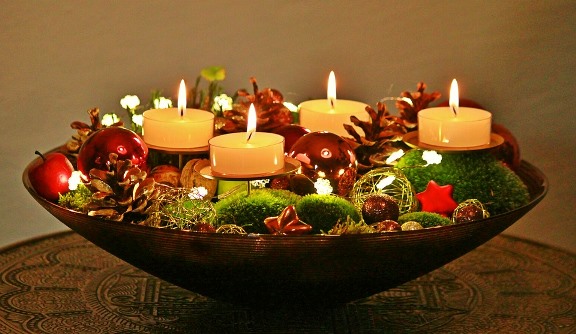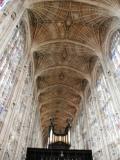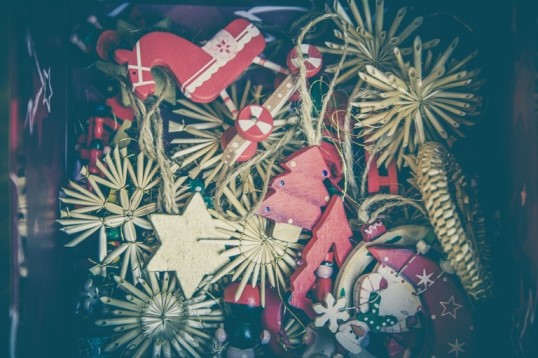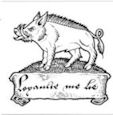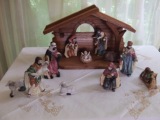
Wishing all our readers a very merry Christmas and lots of happiness and peace for the New Year.
The preparations for the holiday season lead us to consider what Richard’s Christmas would have been like, whether it would have been anything like ours.
You would have looked in vain for a Christmas tree in Richard’s family home at Middleham Castle. For many cultures green branches have symbolised new life and hope for a long time, however, the first record of a Christmas tree can only be found in 1521, in Germany. The first record for candles on a Christmas tree dates from 1611, when Duchess Dorothea Sybilla of Silesia is reported to have decorated her tree in that way (1). While it seems that the Christmas tree was introduced to the British royal family by the early 1800s, its use only became widespread in Queen Victoria’s time (2).
And Richard’s son Edward would not have anticipated the arrival of Santa Claus with impatience. Santa Claus is based on St Nicholas (3) (whose feast day is 6 December, when he leaves sweets and little presents in the shoes of German children). However, Santa Claus is the predominantly American term for the figure called Father Christmas in England. His association with Christmas can in Britain only be traced back to the 17th century (4). While we see Christmas above all as a time for the family to celebrate together, in medieval times it was a time for communities to celebrate together (5). Nor would the cook at Middleham have served turkey, these were only introduced into Europe from America in the 1520s, and the first record in England dates from 1541 (6). As you can see, Richard’s Christmas would have been quite different from what we see as typical today. 
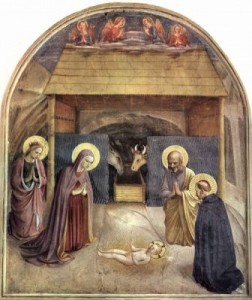 Fra Angelico, Adoration of the Child (1439-43)
Fra Angelico, Adoration of the Child (1439-43)
The season of Advent would have been strictly observed as a time of fasting, and Christmas Eve in particular was a day without any meat, eggs or cheese. Only after mass on Christmas Day everyone could enjoy an unrestricted meal again (7). The Middleham peasants would have expected their lord to provide them with a Christmas meal, often bread, cheese, pottage and two dishes of meat (8). If you were a nobleman, however, you might be treated to a boar’s head as the main course, served with rosemary and an apple or an orange in its mouth. If no boar was available [by the 16th century its domesticated equivalent had to be used to keep up with demand (9)], there was goose or venison. At Middleham you might even have been served swan, smothered in butter and saffron, as Richard would certainly have been granted the King’s permission – they are still royal property today (10).
Mince pies did still contain minced meat and at least three spices (cinnamon, cloves and nutmeg) representing the three gifts given to the Christ child by the Magi (gold, frankincense and myrrh). The pie shell had an oblong shape to represent Christ’s crib, which is why no medieval person cut a mince-pie with a knife (11). Our Christmas pudding of today goes back to the medieval ‘frumenty’ (from the Latin word for corn ‘frumentum’), which was made of thick porridge, wheat, currants and dried fruit. If available, eggs and spices like cinnamon and nutmeg were added (12).
Popular entertainments were liturgical dramas, performed in church, as well as carols (13), which were more communal songs sung at specific feasts rather than in church (14). Though this was probably changing already, as only 50 years later Martin Luther wrote carols specifically for the church (15). Christmas gift-giving was usually between people with a legal relationship, such as tenant and landlord (16).
A popular drink was wassail, which comes from the Old English words waes hael, meaning “be well,” “be hale,” or “good health.” Wassail is a strong, hot drink (usually a mixture of ale, honey, and spices), which was put in a large bowl, and the host would lift it and greet his companions with waes hael, to which they would reply drinc hael, which meant “drink and be well” (17).
And so we wish all of you waes hael for the festive season and the new year!
Notes:
1 “Weihnachtsbaum”. de.Wikipedia. Retrieved 14 December 2009.
2 “Christmas tree”. Wikipedia. retrieved 14 December 2009.
3 Alison Sim, Pleasures & Pastimes in Tudor England. Sutton Publishing, 2002. P. 85
4 “Santa Claus”. Wikipedia. Retrieved 8 December 2009.
5 Sim, p. 85
6 Melissa Snell, “Medieval Christmas Traditions”. About.com: Medieval History. Retrieved 8 December 2009.
7 Sim, p. 85
8 Peter Hammond, Food & Feast in Medieval England. Sutton Publishing, 2005. P. 34
9 Hammond, p. 18
10 Jane Gilbert, “A Medieval Christmas”. Time Travel Britain.com. Retrieved 8 December 2009.
11 Richard Rutherford-Moore, “Christmas traditions in the time of Robin Hood”. BBC Nottingham Feature, December 2002. Retrieved 8 December 2009.
12 Gilbert
13 Snell
14 “Christmas”. Wikipedia. Retrieved 8 December 2009.
15 For example the lyrics for the popular carol “Vom Himmel hoch, da komm ich her”, based on Luke 2, 9-16, were written in 1535, the melody in 1539, both by Martin Luther. Evangelisches Gesangbuch, hymn 25.
16 “Christmas”
17 Snell
Tags: Christmas, Holiday
